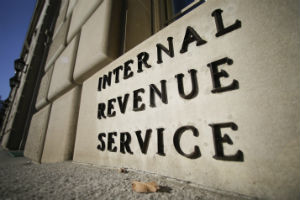On May 14, 2018, the IRS’s Large Business & International (LB&I) Division released guidance intended to aid examiners in determining qualified research expenses (QREs) claimed as part of the Internal Revenue Code Section 41 Credit for Increasing Research Activities (research credit), under a safe harbor provided by an LB&I Directive released last September (Directive). The safe harbor allows taxpayers to claim an adjusted amount of their GAAP ASC 730 research and development (R&D) expenses (ADJ ASC 730) as unchallenged QREs so long as its requirements are followed.
The two pieces of recently released guidance are referred to as Practice Units and include both a Concept Unit and a Process Unit. They were released to assist examiners in carrying out the Directive’s stated purpose, to have an efficient approach when determining the amount of QREs taxpayers are claiming as part of the research credit.
Concept Unit
The Concept Unit provides examiners an overview of Accounting Standards Codification (ASC) Topic 730 Research and Development, under the Generally Accepted Accounting Principles, and how, in the IRS’s view, it relates to Internal Revenue Code (IRC) 41 and 174. ASC 730 establishes the financial accounting and reporting for R&D activities and costs, requiring corporations to report material R&D costs as either a separate line item or in a stated note on certified audited financial statements.
The Concept Unit identifies key features of ASC 730 and how they are similar or different than those under IRC 41 and 174, including definitions of Research, Development, Technological Activities, and Product/Process vs. Business Component.
The Concept Unit further provides guidance on various transactions and activities, finding differences in some of the activities and costs that are included under ASC 730 and IRC 41. It notes that ASC 730 excludes costs associated with activities that a taxpayer conducts for others under a contractual agreement, and costs associated with the development or improvement of a process involving G&A functions, where these costs could both qualify under IRC 41 if certain requirements are met.
Lastly, the Concept Unit analyzes certain costs allowed under ASC 730 that may or may not qualify under IRC 41 and 174. These include certain materials, equipment, facilities and supplies along with their associated depreciation, overhead, and indirect costs. While ASC 730 includes costs incurred within and outside of the United States, IRC 41 excludes costs associated with research conducted outside the U.S. and its territories. ASC 730 costs include intangible assets that do not have an alternative future use. For those with alternative future uses, the amortization of these assets is the ASC 730 cost. While IRC 174 allows amortization of acquisition costs associated with a patent used in qualified research, IRC 41 does not allow any amortization of costs. R&D costs under ASC 730 includes a reasonable allocation of indirect costs, which are not allowed under IRC 41.
In summary, the IRS states that because of the similarities for the costs included in ASC 730 and IRC 41 and 174, that those reported as ASC 730 R&D costs can be a starting point for determining QREs, acknowledging that these costs must be adjusted for those that are not IRC 41 or 174 costs.
Process Unit
The Process Unit provides guidance to examiners for determining QREs claimed under the Directive’s safe harbor. The Process Unit covers ten steps: 1-5 give guidance on the steps an LB&I taxpayer takes to adjust the amount reported as ASC 730 R&D costs in determining its QREs; 6-9 provide four optional steps that the exam team can follow in determining the scope of a research credit examination; and 10 explains how a taxpayer reconciles the QREs claimed on its research credit tax form.
The Directive previously established certain requirements that must be made for a corporation to apply its safe harbor, and the Process Unit offers guidance in completing the required appendices and in separately identifying costs in excess of the ADJ ASC 730 R&D costs claimed as QREs for the research credit.
The Process Unit includes an example of the process, along with other considerations and impact to audits. Certain considerations include who can sign the Certification Statement and the types of documentation taxpayers must retain and make available upon request. Additionally, it recommends examiners to conduct a risk analysis of the additional QREs a taxpayer reports and determine the scope and depth of an examination based on the taxpayer’s facts and circumstances.
Contact your CPA for more information on these credits and how they affect you.
{{cta(‘b05cee88-dbcc-43c2-af17-c5fc17122a75’)}}
